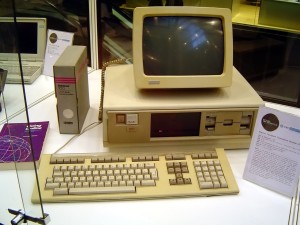
My friend Vinnie is considering buying a MacBook Air. His current laptop has given him years of productive use but, as with all things technological, eventually you have to upgrade. Vinnie knows that he should buy “too much” computer. That is, he should go heavy on the RAM and make sure that his hard drive has oodles (my word) of space. Better to be ahead of the curve.
A new and more powerful computer will certainly increase the speed at which he can surf the net. He’ll have a more current operating system. Vinnie will be able to load applications and use more of them concurrently–although in today’s browser-based world many erstwhile computer programs have been effectively replaced with new tabs in a browser.
Whether Vinnie buys a Mac or a new PC with the highly praised Windows 7, Vinnie’s life will become easier after he learns the new operating system and loads the applications that he needs.
But let’s talk about what his new computer won’t do:
- A Mac won’t “de-dupe” the records in his customer spreadsheet.
- No PC is going to analyze the records in his accounting package. No will it identify questionable vendor records and accounts.
- Since Vinnie uses multiple sites to manage his projects, no computer will magically merge largely unstructured data from each.
So, what does Vinnie’s dilemma have to teach us about the corporate world?
Data and the Limits to Application Modernization
In a post entitled “Are legacy applications causing your recovery to drag?“, my friend Charlie Bess of HP writes:
The slow recovery requires you to have more flexible and integrated systems–after all technology, like customers, didn’t stop advancing during the downturn. There are also new automation techniques available that increase the quality while lowering costs. No users will stand for a hodgepodge of solutions thrown together into a virtual application scrum–users will want to see the interface, the data and the process integrated into a more intuitive and cohesive interaction. This takes enterprise architecture, process and interface design. Not something that can be done overnight.
Bess is absolutely right here. Organizations need to embrace contemporary applications and platforms to take the next step. But there are significant limits to what application modernization can do.
For example, let’s say that your organization is currently running its CRM system on a clunky mainframe. No one can access this system—and its data—without going through multiple steps and VPNs. The data in the system is a mess.
So, you’re thinking of moving to a SaaS CRM application. Will you have a more contemporary system? Yes. Will you be able to get at your information more easily? Yes. Will your data still be a mess? Yes.
Simon Says
It’s easy to blame bad data on legacy apps. Don’t make that mistake. If you improve the apps but leave the data alone, have you actually solved any problems? Or do you just have fancier screens still populated with bad data?
 PHIL SIMON
PHIL SIMON


Been trying to reconcile a data from a survey with rule of thumb. This blog provide the answer I was looking for.
70% of respondents to an Enterprise CIO Forum Quick Poll claim they’ve already modernized their apps. The number seems extremely optimistic for the reasons you mentioned. Putting a web front end on an existing app isn’t modernization if the app doesn’t work or is based on weak data. The other option (very common) is to build a new app and start adding new data from scratch.
—Paul Calento
(note: I work on projects sponsored by Enterprise CIO Forum and HP)